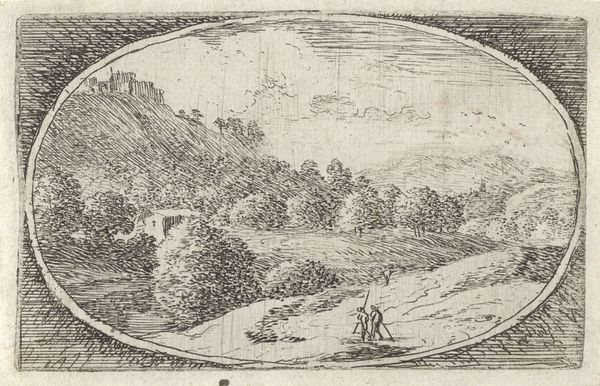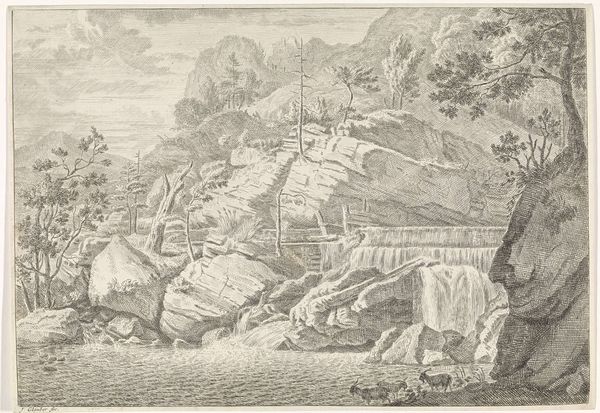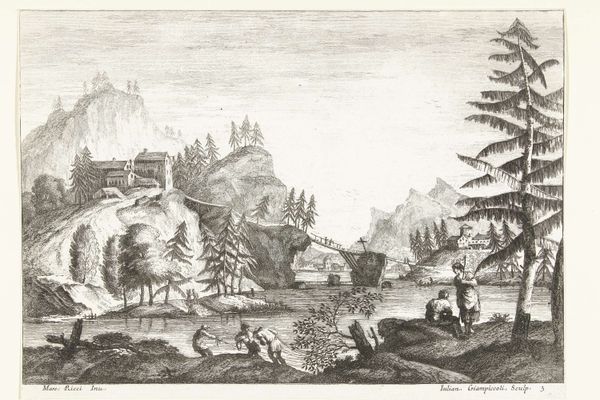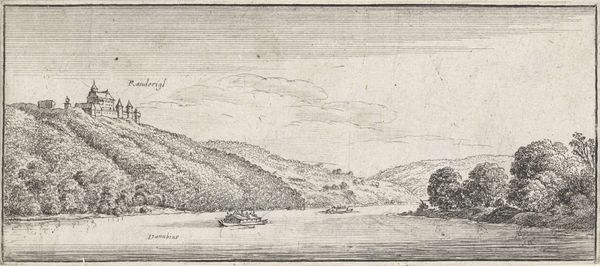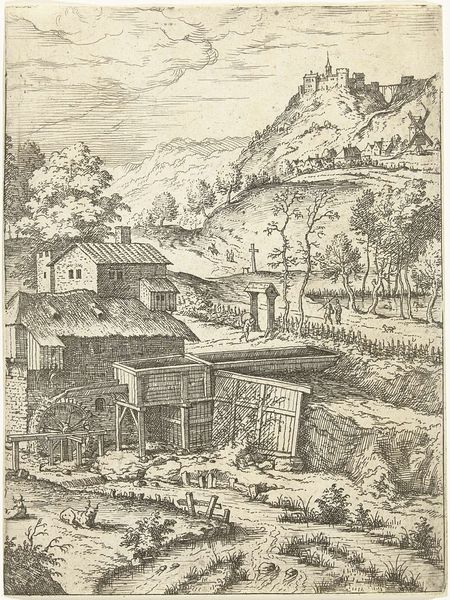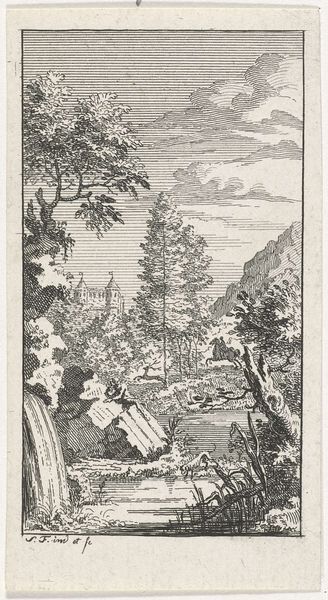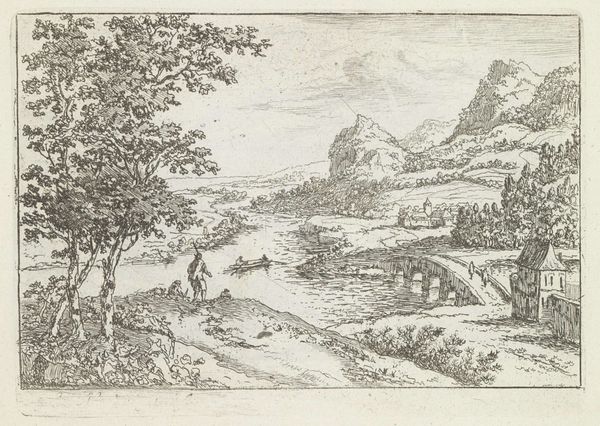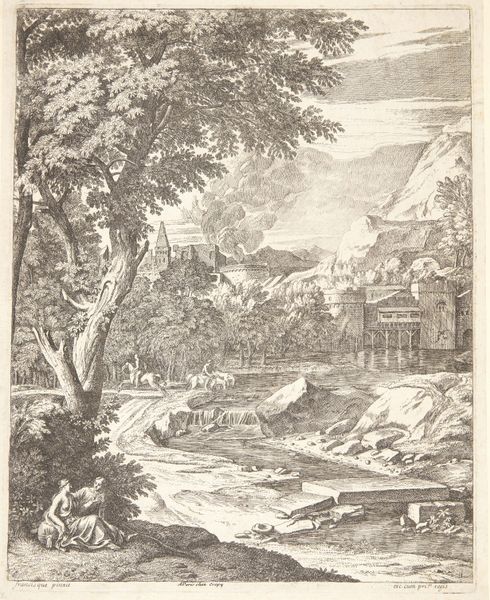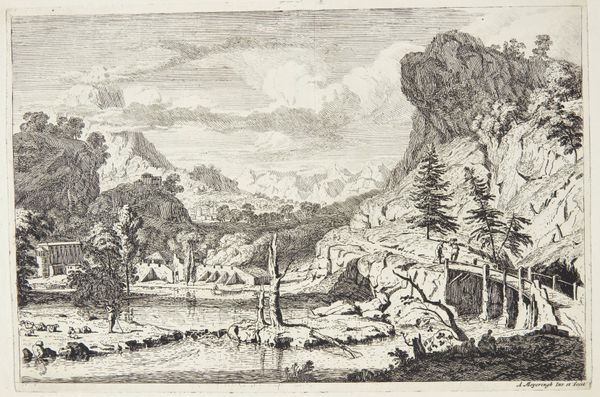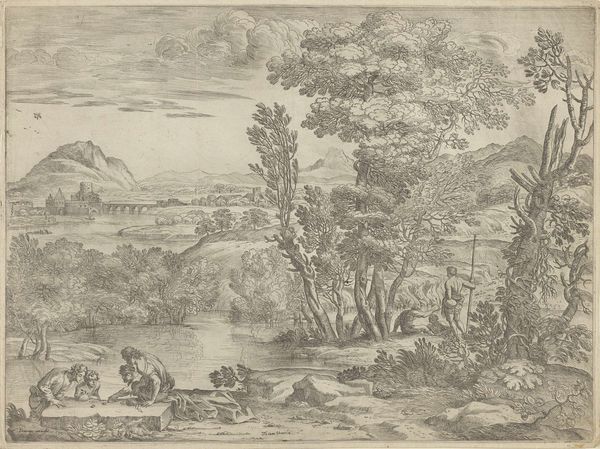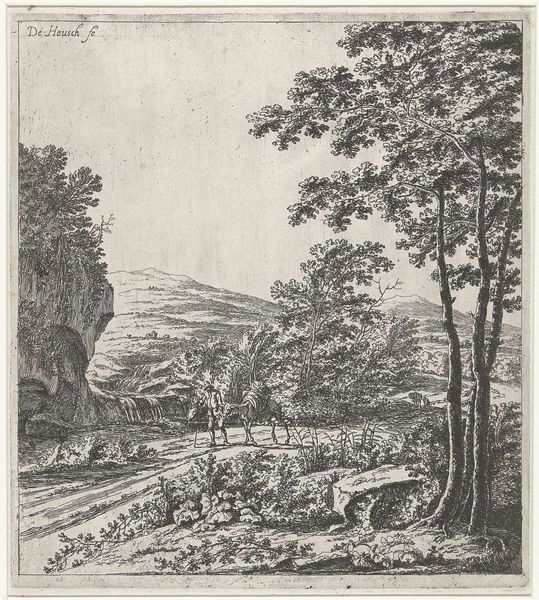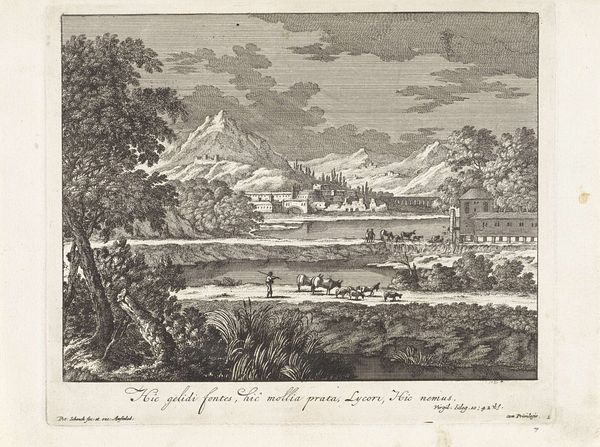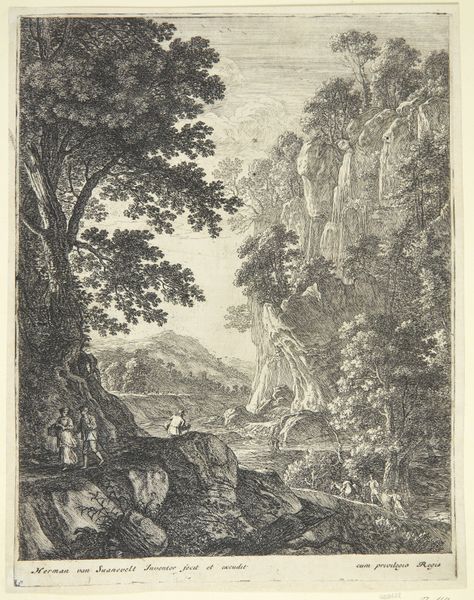
drawing, print, ink, engraving
drawing
baroque
pen sketch
old engraving style
landscape
ink
engraving
Dimensions: height 175 mm, width 131 mm
Copyright: Rijks Museum: Open Domain
Curator: Here we have Stefano della Bella's "Klooster van Vallombrosa," dating from sometime between 1620 and 1664. It’s an engraving, rendered in ink. Editor: It strikes me as incredibly dense. A whole world compressed onto a single plane. The detailed hatching creates this almost claustrophobic effect, especially with that looming mountainside. Curator: Indeed. Let's look at how the composition functions. Note the artist's rendering of depth. There's the tree on the left in the foreground, and in the center, what appears to be a schematic depiction of the monastery enclosed by a semi-circular wall, contrasted against the densely packed background. How does the contrast contribute to its meaning? Editor: For me, the contrast highlights a tension between the ordered space of the monastery, literally encircled and protected, and the chaotic, untamed wilderness beyond. I mean, even a bear seems to be approaching the site. It really begs questions about enclosure, nature, and civilization. Who is being excluded and why? Curator: A perceptive reading! Della Bella has certainly created a visual representation, not simply of a place, but an idea. Look at the linear perspective used in the building structures compared to the free-flowing river and organic mountain growth. Editor: Yes, and while it’s ostensibly a depiction of the monastery's founding, it’s also an assertion of power—both earthly and spiritual. That perfectly manicured courtyard juxtaposed with the unruly forest? That speaks volumes about humanity’s perceived dominion over nature, or at least attempts thereof. It almost resembles a stage production of human achievement within a landscape designed by forces out of their control. Curator: Well put! Consider, too, that the Baroque period loved dramatic contrasts. This work encapsulates that stylistic tendency by emphasizing, rather than trying to obscure, opposing views. Editor: Which makes the inclusion of the bear all the more poignant. This one animal challenges any sense of static completion the monastery's architecture implies. Ultimately, I find the work deeply unsettling and thought-provoking. Curator: Yes, there is a unique convergence of aesthetic values. Hopefully, the piece reveals new things each time someone returns to contemplate it.
Comments
No comments
Be the first to comment and join the conversation on the ultimate creative platform.
